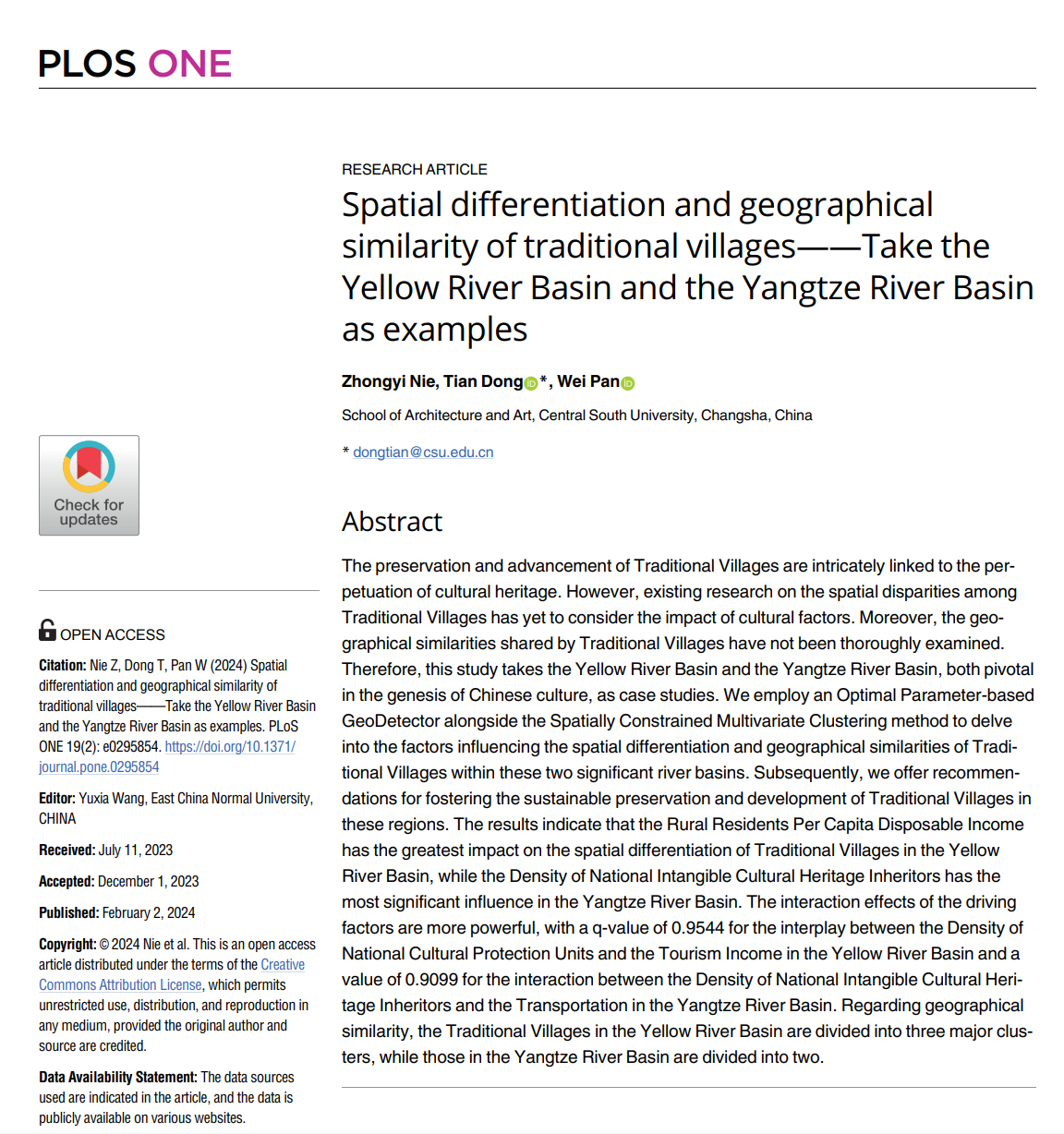Spatial differentiation and geographical similarity of traditional villages——Take the Yellow River Basin and the Yangtze River Basin as examples
发布时间:2024-03-18
点击次数:
发表刊物:PLOS ONE
摘要:The preservation and advancement of Traditional Villages are intricately linked to the perpetuation of cultural heritage. However, existing research on the spatial disparities among Traditional Villages has yet to consider the impact of cultural factors. Moreover, the geographical similarities shared by Traditional Villages have not been thoroughly examined. Therefore, this study takes the Yellow River Basin and the Yangtze River Basin, both pivotal in the genesis of Chinese culture, as case studies. We employ an Optimal Parameter-based GeoDetector alongside the Spatially Constrained Multivariate Clustering method to delve into the factors influencing the spatial differentiation and geographical similarities of Traditional Villages within these two significant river basins. Subsequently, we offer recommendations for fostering the sustainable preservation and development of Traditional Villages in these regions. The results indicate that the Rural Residents Per Capita Disposable Income has the greatest impact on the spatial differentiation of Traditional Villages in the Yellow River Basin, while the Density of National Intangible Cultural Heritage Inheritors has the most significant influence in the Yangtze River Basin. The interaction effects of the driving factors are more powerful, with a q-value of 0.9544 for the interplay between the Density of National Cultural Protection Units and the Tourism Income in the Yellow River Basin and a value of 0.9099 for the interaction between the Density of National Intangible Cultural Heritage Inheritors and the Transportation in the Yangtze River Basin. Regarding geographical similarity, the Traditional Villages in the Yellow River Basin are divided into three major clusters, while those in the Yangtze River Basin are divided into two.
论文类型:期刊论文
通讯作者:董天
是否译文:否
发表时间:2024-02-02
收录刊物:SCI

